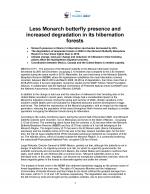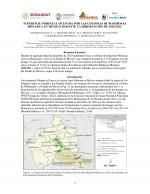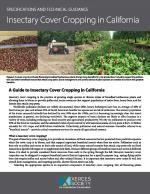As a science-based organization, the Xerces Society produces dozens of publications annually, all of which employ the best available research to guide effective conservation efforts. Our publications range from guidelines for land managers, to brochures offering overviews of key concepts related to invertebrate conservation, from books about supporting pollinators in farmland, to region-specific plant lists. We hope that whatever you are seeking—whether it's guidance on making a home or community garden pollinator-friendly, advice on developing a local pesticide reduction strategy, or detailed information on restoring habitat—you will find it here!
Find Publications
Use the search functions to sort by publication type (books, guidelines, fact sheets, etc.), location, and/or subject (agriculture, gardens, pollinators, pesticides, etc.).
A diversity of milkweed species is found on roadsides, and play an important role in supporting the life cycle of monarchs. This guide can help you recognize the most common native species of milkweed on roadsides in your region.
A diversity of milkweed species is found on roadsides, and play an important role in supporting the life cycle of monarchs. This guide can help you recognize the most common native species of milkweed on roadsides in your region.
Press Release from WWF-Mexico
Press release issued by World Wildlife Fund Mexico announcing results from surveys and monitoring of the overwintering colonies of monarch butterflies in Mexico for the 2020-2021 season.
Report from WWF–Mexico about the overwintering monarch colonies in Mexico
The report from WWF–Mexico containing results from the survey and monitoring of the monarch overwintering colonies in Mexico during the 2020-2021 season.
Report from WWF–Mexico about condition of forests in monarch overwintering sites Mexico
Report from WWF–Mexico about the condition of forest and changes in forest cover in the core area of the Monarch Butterfly Biosphere Reserve in Mexico during the period 2019 to 2020.
Scouting & Field History Reports for Early Season Corn and Soybean IPM
A chemical control strategy like neonicotinoid seed treatments should only be considered when there is a potential for harm demonstrated by scouting and field history. This fact sheet evaluates use of insecticidal seed treatments for seven corn and soybean pests and offers guidance on: (a) which corn and soybean pests neonicotinoid seed treatments may be used for, (b) when scouting should occur to inform future decisions on use of neonicotinoid seed treatments, and (c) how to scout for these early season pests.
Insectary cover cropping is the practice of growing single species or diverse mixes of broadleaf herbaceous plants and allowing them to bloom to provide pollen and nectar resources that support populations of native bees, honey bees, and the insects that attack crop pests.
Creating a welcoming home for local pollinators in your home garden or city park habitat is reason enough to choose plants free from harmful pesticide residues. Nurseries are more likely to make investments in pollinator-friendly production if their customers make it clear this is what they want. Our guide, Buying Bee-Safe Plants, covers four ways to help you find plants that are safe for bees, and includes tips and questions to use at the nursery.
Three core elements of pollinator-friendly growing include using non-chemical methods to prevent and manage pests, monitoring of pest pressure, and limiting risk to pollinators if pesticides are used. These concepts are rooted in integrated pest management and are familiar to most growers. Offering Bee-Safe Nursery Plants: A Guide for Nurseries explains these concepts further and was created for wholesalers and retailers to explore, encourage, and implement pollinator friendly pest-management in the nursery business.
Western monarchs need everyone’s help. Starting in 2018, monarch butterflies had tough seasons in their migratory and breeding grounds in the western states and, in the following two winters, the annual Xerces Western Monarch Thanksgiving Count showed that the population hit a new low: In both 2018 and 2019, volunteers counted under 30,000 monarchs—less than 1% of the population’s historic size.
This Western Monarch Call to Action, led by the Xerces Society for Invertebrate Conservation, aims to provide a set of rapid-response conservation actions that, if applied immediately, can help the western monarch population bounce back from its critically low overwintering size.










